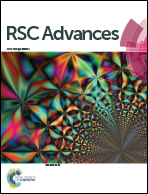Mechanism of the evolution of pore structure during the preparation of activated carbon from Zhundong high-alkali coal based on gas–solid diffusion and activation reactions
Abstract
Zhundong coal can significantly reduce the preparation temperature of activated carbon (AC) due to the high contents of alkali and alkaline earth metals (AAEMs) present in it. Moreover, because of its lower operating temperature and the presence of carbon matrix, Zhundong coal can effectively inhibit the release of AAEM during the preparation of AC. For these reasons, the preparation of AC from Zhundong coal is a promising approach for the clean utilization of Zhundong coal. Accordingly, this study was aimed to investigate optimum conditions for the preparation of AC from Zhundong coal. For this purpose, at first, Raman spectroscopy was used to determine the conditions for an optimal carbonization process using a coal sample; then, the evolution of the pore structure of AC under different conditions was examined by small-angle X-ray scattering (SAXS) and the N2 adsorption analyser. Furthermore, environmental scanning electron microscopy (ESEM) was performed to analyze the surface morphology of AC. Finally, by dividing the activation process into gas–solid diffusion and activation reactions, a mechanism for the evolution of pore structure during the preparation of AC was proposed. The results showed that the char with an amorphous structure and less graphite-like carbon, which was obtained by heating Zhundong coal from room temperature to 600 °C at 5 °C min−1 under the protection of N2 and then maintaining it at this temperature for 60 min, is suitable for the subsequent activation process. At low temperatures, the diffusion of H2O was dominant in the activation process, and the weak gas–solid reaction resulted in poor development of the pore structure; on the other hand, the CO2 activation reaction mainly occurred on the surface of the char due to the poor diffusion of CO2, and then, the produced pores could improve the diffusion of CO2; this led to significant development of the pore structure. With an increase in temperature, the H2O diffusion reaction was enhanced, and the pore structure of AC was completely developed; however, the diffusion of CO2 reduced with an enhancement in the CO2 activation reaction, leading to the consumption of carbon matrix by CO2 gasification instead of pore formation by the CO2 activation reaction. Therefore, proper utilization of the unique characteristics of H2O and CO2 during pore formation is important to control the activation process.



 Please wait while we load your content...
Please wait while we load your content...